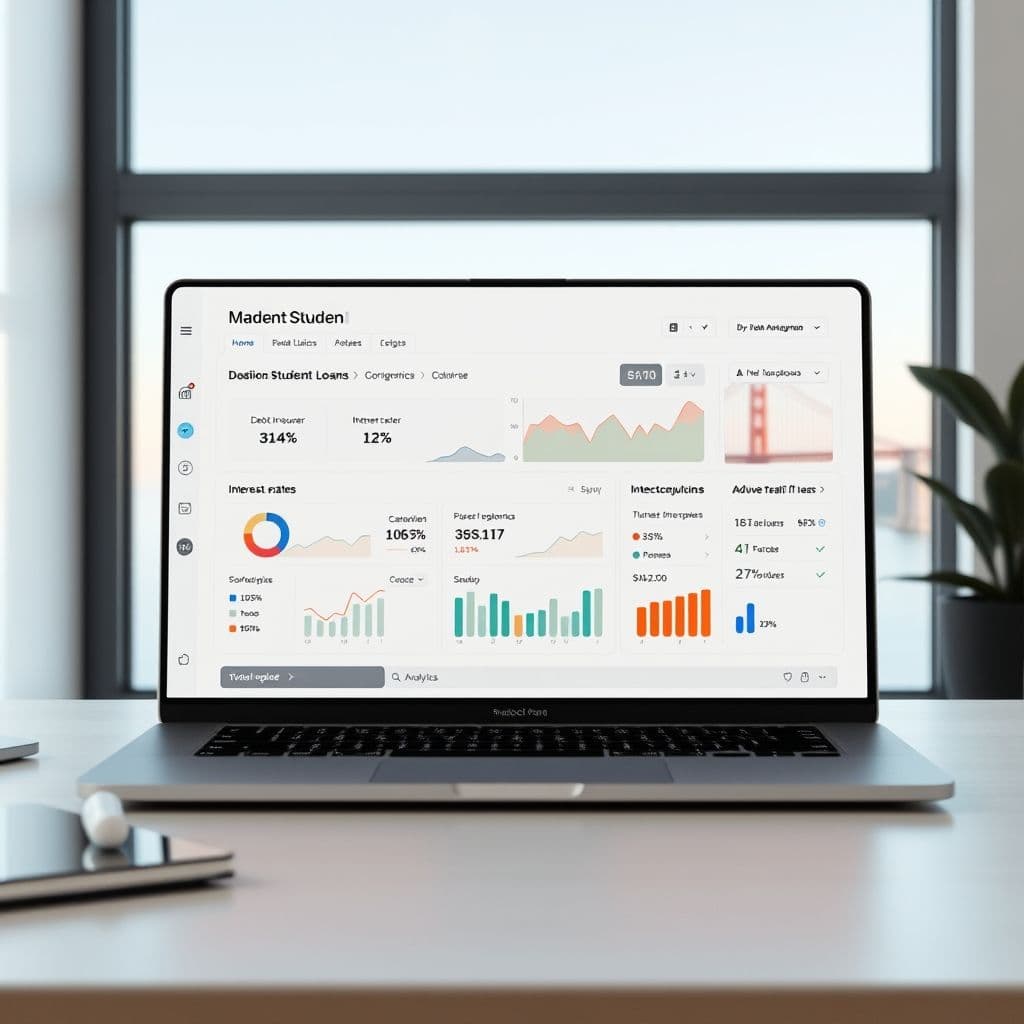Student Loan Debt Trap: How High Interest Rates Crush Dreams and What Could Help

Imagine paying $15 monthly on your student loans for two years, only to discover you owe more than when you started. This isn't a nightmare scenario—it's the reality for millions of Americans trapped by student loan debt with interest rates as high as 17%. The TikTok video that went viral captures the raw frustration of a generation that signed financial agreements at 17 without understanding the lifelong consequences. This article explores the student loan debt crisis and imagines a SaaS solution that could potentially help borrowers escape this financial trap.
The Student Loan Debt Trap: How We Got Here
The fundamental problem with student loans isn't just the principal amount borrowed—it's the predatory interest rates that compound daily, turning manageable debt into lifelong financial imprisonment. Borrowers like the TikTok creator discover too late that their $15 monthly payments don't even cover the interest accruing at 17%, meaning their debt grows despite making regular payments. This creates a psychological and financial burden that affects life decisions, from home ownership to starting families.
The comments on the viral video reveal deeper systemic issues: lack of financial literacy education in schools, the political battleground around loan forgiveness, and the desperate measures people consider—from bankruptcy claims to egg donation. The emotional toll is palpable, with borrowers feeling betrayed by a system that offered education as a path to prosperity but delivered financial servitude instead.

A Hypothetical SaaS Solution: Financial Education and Debt Management Platform
What if there was a comprehensive platform designed specifically to address the student loan debt crisis? Imagine a SaaS solution that combines financial education with practical tools to help borrowers understand, manage, and ultimately reduce their student loan burden. This hypothetical platform would serve as a financial companion for the 45 million Americans struggling with student debt.
The core functionality would include personalized debt tracking that shows exactly how interest compounds daily, simulates different payment scenarios, and projects total costs over time. It would feature an interest rate comparison engine that analyzes current market rates and identifies refinancing opportunities that could save borrowers thousands of dollars. The platform would also provide educational content tailored to each user's specific debt situation, explaining complex financial concepts in accessible language.

Key Features That Could Transform Student Loan Management
This hypothetical platform would offer several innovative features designed specifically for student loan borrowers. The debt simulation tool would allow users to visualize how different payment strategies affect their total repayment amount and timeline. The refinancing marketplace would connect borrowers with vetted lenders offering competitive rates, with transparency about fees and terms. Personalized financial education modules would adapt to each user's specific debt type, interest rate, and financial situation.
Additional features could include automated payment optimization that suggests the most effective payment allocation strategy, alert systems for rate changes or forgiveness program qualifications, and community forums where borrowers share strategies and support. The platform would prioritize transparency, showing exactly how much each dollar paid reduces principal versus interest, and projecting how long until debt-free status under different scenarios.
Potential Impact and User Benefits
For borrowers like the TikTok creator with 17% interest rates, such a platform could mean the difference between lifelong debt and financial freedom. By identifying refinancing opportunities that drop rates to 5-7%, borrowers could save tens of thousands of dollars in interest. The educational component would empower users to make informed decisions rather than feeling helpless against complex financial systems.
The psychological benefits might be equally valuable—replacing anxiety and hopelessness with clarity and control. Users would understand exactly where they stand, how different actions affect their debt, and what options exist for improvement. This could reduce the desperate measures people consider when feeling trapped by debt, from bankruptcy to drastic life decisions made purely for financial reasons.
Conclusion
The student loan debt crisis represents a fundamental failure in both financial education and consumer protection. While no single solution can fix this systemic problem, a comprehensive SaaS platform focused on education, transparency, and practical management tools could empower millions of borrowers to escape the debt trap. By providing clarity in a confusing system and identifying concrete opportunities for improvement, such a platform could transform how Americans approach student debt management.
Frequently Asked Questions
- How difficult would it be to develop a student loan management SaaS platform?
- Developing such a platform would require significant financial technology expertise, integration with lending APIs, and robust security for sensitive financial data. The educational content would need to be comprehensive yet accessible, and the refinancing marketplace would require partnerships with multiple lenders. However, the technology exists—the challenge would be creating a user experience simple enough for financially overwhelmed borrowers.
- Would a platform like this actually help borrowers with existing high-interest loans?
- Potentially yes, by identifying refinancing opportunities that could dramatically lower interest rates. Even reducing a 17% rate to 7% could save borrowers thousands of dollars and years of payments. The educational component would help prevent future poor financial decisions, and the tracking tools would provide clarity on progress rather than leaving borrowers in the dark about their debt situation.
- How would this hypothetical platform make money while helping borrowers?
- Possible revenue models could include premium features for advanced analytics, referral fees from vetted lending partners (with full transparency), or institutional subscriptions from colleges wanting to provide better financial education to students. The key would be aligning monetization with borrower success—earning when users save money rather than when they accumulate debt.


